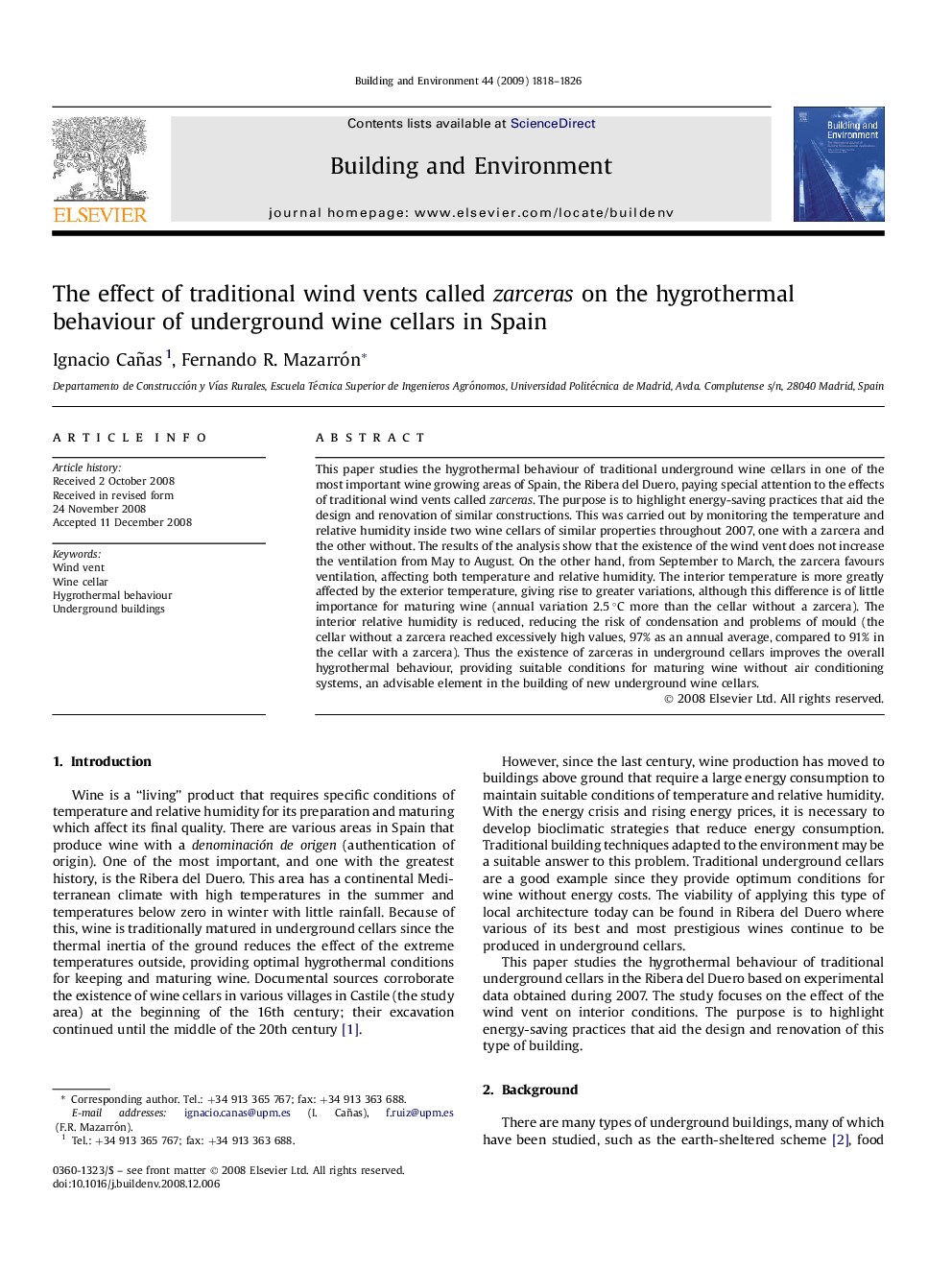| Article ID | Journal | Published Year | Pages | File Type |
|---|---|---|---|---|
| 249701 | Building and Environment | 2009 | 9 Pages |
This paper studies the hygrothermal behaviour of traditional underground wine cellars in one of the most important wine growing areas of Spain, the Ribera del Duero, paying special attention to the effects of traditional wind vents called zarceras. The purpose is to highlight energy-saving practices that aid the design and renovation of similar constructions. This was carried out by monitoring the temperature and relative humidity inside two wine cellars of similar properties throughout 2007, one with a zarcera and the other without. The results of the analysis show that the existence of the wind vent does not increase the ventilation from May to August. On the other hand, from September to March, the zarcera favours ventilation, affecting both temperature and relative humidity. The interior temperature is more greatly affected by the exterior temperature, giving rise to greater variations, although this difference is of little importance for maturing wine (annual variation 2.5 °C more than the cellar without a zarcera). The interior relative humidity is reduced, reducing the risk of condensation and problems of mould (the cellar without a zarcera reached excessively high values, 97% as an annual average, compared to 91% in the cellar with a zarcera). Thus the existence of zarceras in underground cellars improves the overall hygrothermal behaviour, providing suitable conditions for maturing wine without air conditioning systems, an advisable element in the building of new underground wine cellars.
